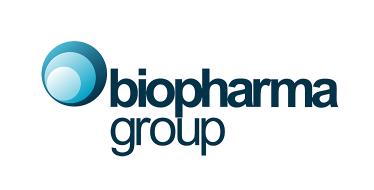 Add My Company
Add My Company
Sign In

Collagen bio-scaffolds are hugely beneficial to many medical fields and therefore it is essential that the process used to develop them is as robust and viable as possible.
Here, we seek to outline the main markets, applications, and importance associated when freeze drying collagen bio-scaffolds, and the care that must be taken during the freezing as well as drying steps, to maximise the efficiency and ice crystal structure/target porosity.
Uses of collagen scaffolds in medicine
Collagen is the most abundant protein in the animal kingdom. It comprises 30% of the total protein found in the human body and is the key structural protein in the naturally occurring extracellular matrix (ECM) of various fibrous tissues including tendons, ligaments and skin, but also bones, corneas, blood vessels, cartilage and connective tissues. It is the glue that holds our bodies together, providing structural support and strength.
In vitro, it can be formed into highly organised, three-dimensional scaffolds which are biocompatible, biodegradable, and non-toxic upon exogenous application. All of these features make collagen the material of choice for tissue engineering, regenerative medicine and wound healing. Every day thousands of surgical procedures are performed to replace or repair tissue that has been damaged through disease or trauma.
Tissue engineering is a relatively new specialism which aims to regenerate damaged tissues by combining cells from the body with collagen scaffolds, which act as templates for tissue regeneration and guide the growth of new tissue. Collagen for medical products can be derived from a range of different sources – there is a growing influence from porcine, chicken, and also jellyfish derivatives, but most commonly being that of bovine. It is used to guide and encourage tissue regeneration in the sponge, thin sheet or gel form.
Collagen bio-scaffolds can be used in a wide variety of medical fields, but it’s not a case of one size fits all, so it’s essential to develop a process that makes them as robust and viable as possible for their end purpose.
They can be used:
In vivo (in a living organism) – to support the regrowth of tissue or bone after surgery or an injury
In vitro (outside normal biological context) – for example, growing new organs from adult stem cells Some of the more typical medical applications which collagen scaffolds have been used for include:
Bone grafts – bio-scaffolds don’t compromise the structural integrity of bones and due to collagen’s triple helical structure it is strong and cannot be broken down by enzymes. It is very important for the proper assembly of extracellular matrices
Cosmetic surgery – collagen can be used to treat skin aging by removing wrinkles and lines with dermal fillers, and can also help with stretch marks and some types of scars
Wound dressing – as a significant component of skin tissue, collagen can benefit all stages of the wound healing process. It can be used to aid healing of all different kinds of wounds including second-degree burns by offering a feasible platform for the topical conveyance of cells into the wound bed
Tissue regeneration and engineering – collagen has very good properties for tissue regeneration: controllable pore structure, permeability, hydrophilicity, and stability in vivo
Cardiac applications – collagen scaffolds can help to repair the heart after a heart attack
Other areas include treatment of osteoarthritis and newer cancer
therapies for example
Scaffold production and the importance/benefits of freeze drying
When working with collagen material the structure and pore size are of intrinsic value as these can have a significant effect on the growth of the new tissue
When the new tissue develops in the pores, the bio-scaffold degrades (the body breaks down the collagen and assimilates the protein over time), leaving only healthy grown tissue
Achieving the optimum texture and porosity of the sponge/ sheets is essential to support and encourage the body to generate new cells and to ensure the desired structure
To read the full article please visit our website
For more information on Collagen Scaffold Production: The Freeze Drying Method talk to Biopharma Group
Enquire Now
More News
List your company on FindTheNeedle.

